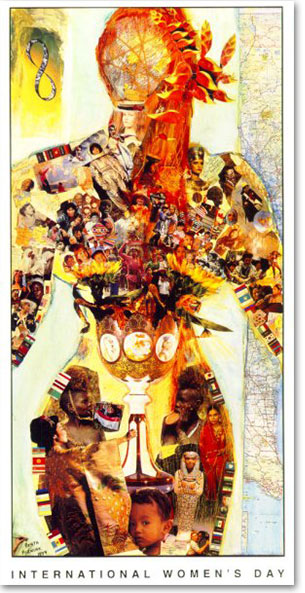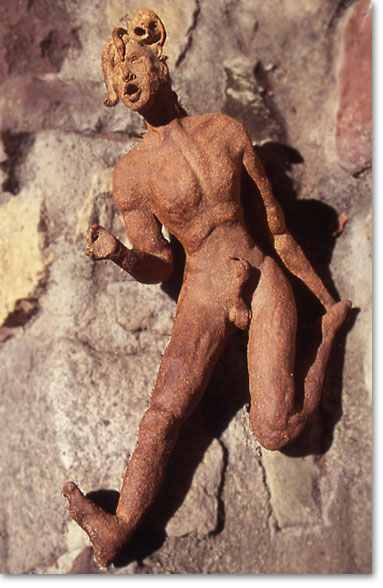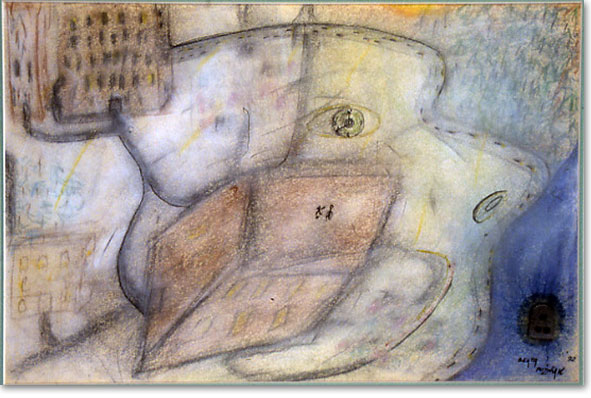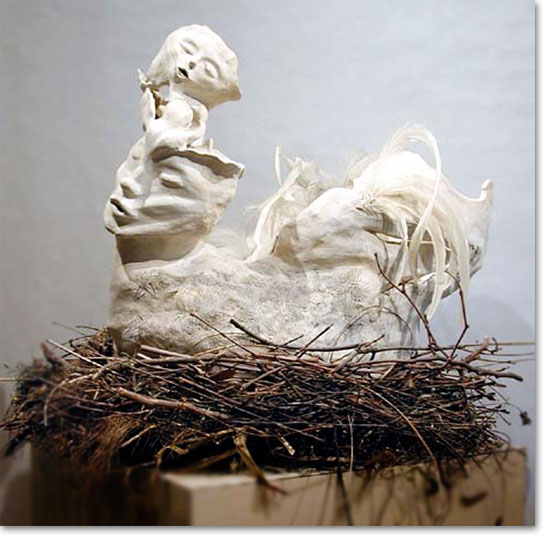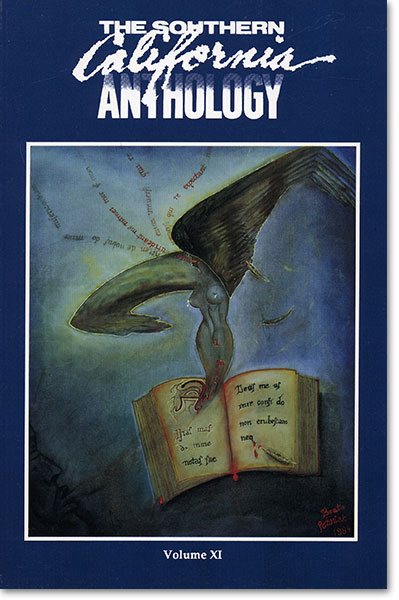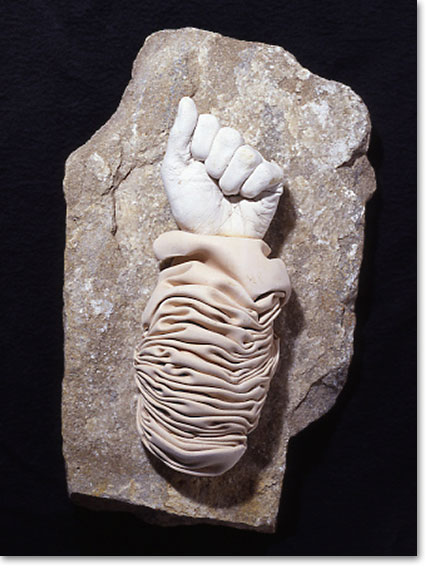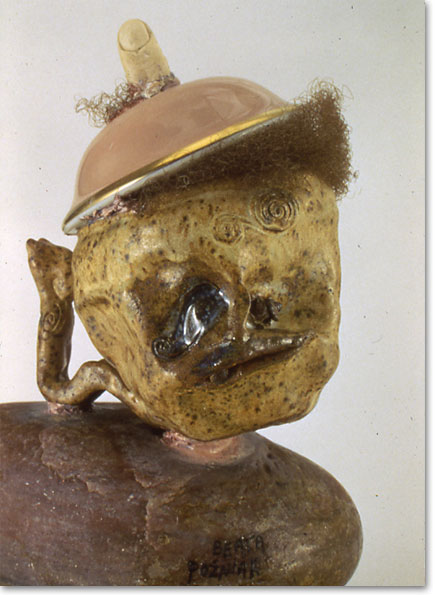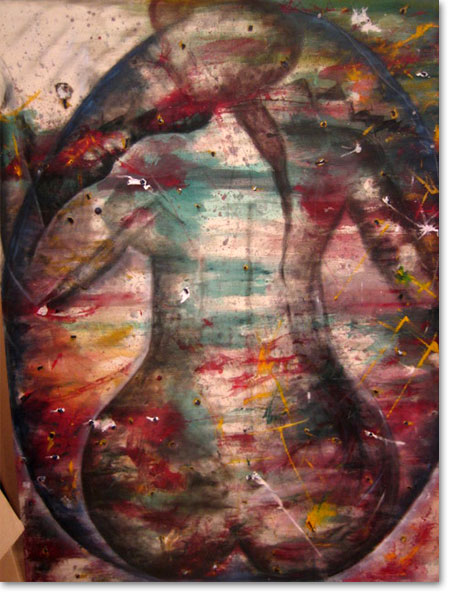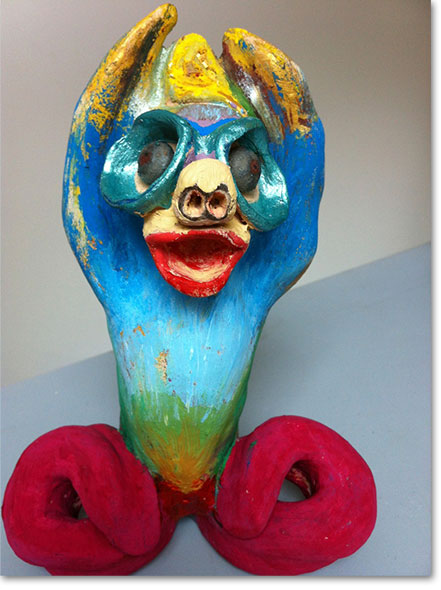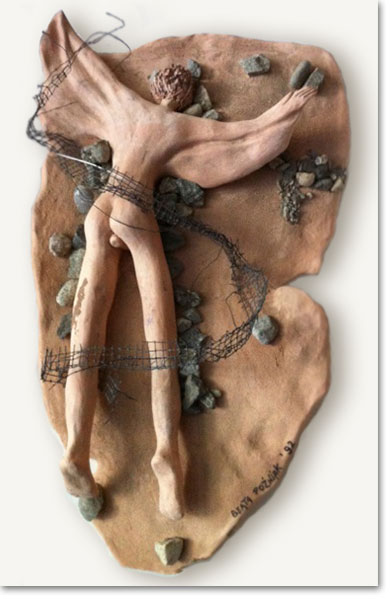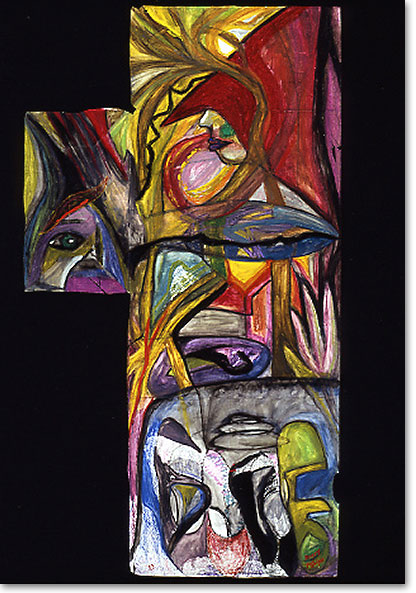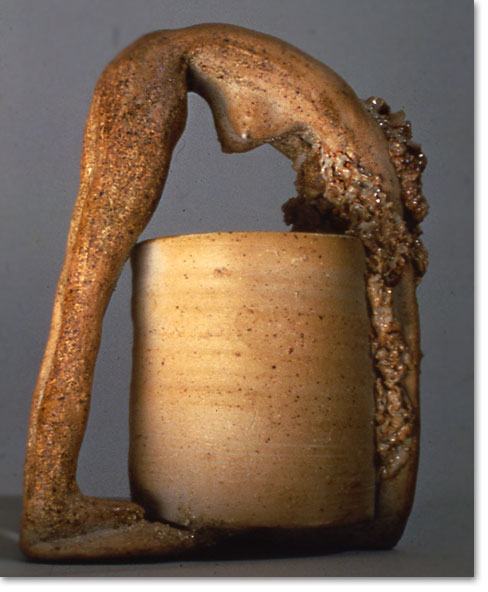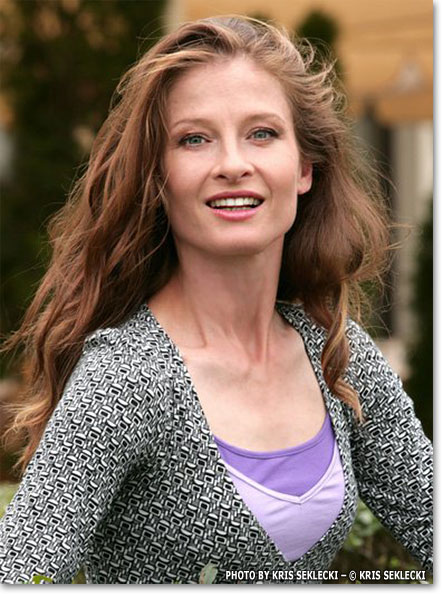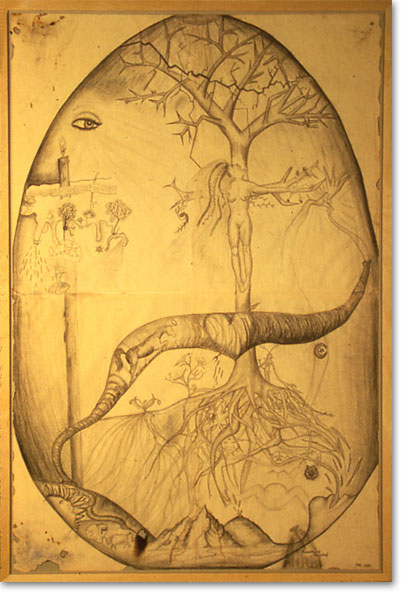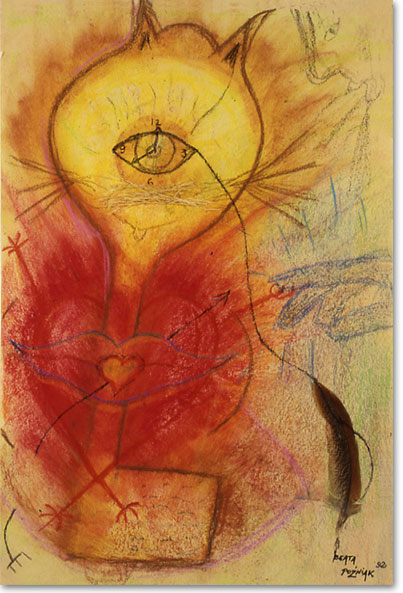|
||||||||||||||||||||||||||||||||||||||||||||||||||||||||||||||||||||||||||||||||||||||||||||||||||||||||||||||||||||||||||||||||||||||||||||||||||||||||||||||||
|
Beata's work in fine arts is not untypical for actors and directors. Little known to their audiences, many filmmakers and actors are actually also talented painters and sculptors. One of the most prominent examples is Julian Schnabel. Besides being the award-winning director of THE DIVING BELL AND THE BUTTERFLY, he is also a celebrated figure in the art community, particularly known for his giant paintings set on broken ceramic plates. Others such as David Arquette, Pierce Brosnan, Viggo Mortensen, Steven Soderberg, Tim Burton, and Akira Kurosawa are also among the ranks of actors and directors who have made successful forays into art.
Though Beata creates paintings, drawings, masks and sculptures, the common theme that underlies all her work are ancient stories she references again and again. Among those stories she prefers are legends, especially those of the Greco-Roman mythology. Even as her art underwent distinct stages, the one uniting element remains the references to mythology. Not surprisingly, Beata credits Joseph Campbell, mythology expert and writer, as a major influence on her art and her view of life, which is: "Follow your bliss." Take MNEMOSYNE (International Women's Day), for example. When you look up close, your eyes will be drawn to snapshots of women and children throughout history in both monumental and everyday moments. But pulling back from this collage, the woman figure these individual pictures brings forth a new layer of meaning, that of the character of MNEMOSYNE herself. As the THEOGONY tells us, MNEMOSYNE was the Titaness of memory and mother of the nine Muses, opening up many possibilities of interpreting Beata’s 28.5” x 40.5” collage on canvas.
PEGASUS is one of Beata’s clay sculptures so named because of the well-known mythic creature’s lesser-known origins – the “wise blood” of Medusa, a figure representative of female wisdom. Following the mythic narrative theme in her artwork is a heavy philosophical influence. What fascinates Beata is the concept of time and all of its metaphysical implications.
Just as egg imagery appears in her artwork, clocks also feature prominently. She directly poses her questions in a more surrealist crayon piece candidly titled A TIMELESS QUESTION: WHEN DID TIME REALLY BEGIN? ANIMA POETAE is an oil-on-canvas piece that reverberates with literary, philosophical and mythological elements. In it, a contorted angelic figure emerges from an ancient-looking text, which is breathed into life by an initially unnoticed mouth in the corner. Strings of Latin script drift outward from the angel-figure’s head. ANIMA POETAE, meaning, “soul of a poet,” was created for the cover of the Southern California Anthology, a compilation of selected works of Pulitzer and Nobel Prize winners.
To Beata, the movie screen is just another canvas to which she can express herself with the same passion. Beyond her collage, Beata further explored the ideas of MNEMOSYNE in an experimental short film of the same title in 2002. In collaboration with screenwriting guru Syd Field, she directed and acted in MNEMOSYNE. In this film, she delves deeper into the mystery and beauty of female power and further tears down notions of what is past and present, pointing out themes of timeless importance.
With the same typical passion, Beata prepared for the role of Marina Oswald in Oliver Stone's JFK. Being fluent in Russian, Beata gained the trust of the real-life Marina Oswald, widow of Lee Harvey Oswald, and lived with her for an extended period in Texas. Beata's total immersion approach to become the character she portrays--she also became an expert on the Warren Commission Report--impressed not only the real Jim Garrison, who corresponded with her, but also her director Oliver Stone. He subsequently cast Beata to play the lover of the title character of his film NORIEGA opposite Al Pacino, but creative and financial complexities led to the project's eventual cancellation while rehearsals were already taking place.
Known in her native Poland as a cover girl and soccer player (she was the official cover girl / mascot of the Polish national soccer team), Beata's career as an actress began with a bit part in the TIN DRUM, which was filmed in Poland. This first step was followed by over 20 European films and television shows, many in her native country. Eventually, she came under the mentorship of Academy Award recipient film director Andrzej Wajda who cast her in his film CHRONICLE OF LOVE AFFAIRS, which was the last film before Beata left for America. Once in the United States, Beata quickly established herself in television. She played the character Dr. Katya Petrova in MELROSE PLACE, who marries a gay man, which at the time was certainly a groundbreaking role for mainstream television. In MAD ABOUT YOU, Beata had the opportunity to show off her comedic abilities as Masha while she appeared as an exotic Israeli spy in JAG. Eventually, she took on the role of a fiery revolutionary in George Lucas’s series THE YOUNG INDIANA JONES CHRONICLES.
Cult film fans know her as Jayce Anderson in the black comedy CYXORK 7, about a low-budget film crew shooting a sci-fi movie at the epicenter of a mega earthquake. Here, Beata portrays a not-to-be-trifled-with wife who relentlessly attempts to revive her husband’s (Ray Wise) fading career as a B-movie legend. But it is in creating art where Beata can go all out with her creativity. If there is a main philosophy she follows, it is that of discordia. She says, “Discordia means looking to the renaissance, the baroque, the medieval periods and rediscover the archetypes. Then you mix it all together in a space where anything can happen.”
KUNDALINI is an oil on clay sculpture, drawing its name from what Tibetan lamas consider the most sacred awakening experience that can be attained from meditation. Typically, Kundalini is envisioned in symmetrical diagrams of a lotus-positioned figure. Beata’s interpretation is far more free-form and asymmetric. The actual feminine figure within the sculpture at first eludes the eye, but the curves of her body are discernible amongst the ripples of colors, which add to the impression that she is indeed in motion. Having lived under authoritarian socialist rule where the purpose of art was perverted by the state to celebrate its power and glory, Beata feels strongly that her art should benefit the people in her community, make a difference and bring about healing.
Other charities in which Beata has supported include Habitat for Humanity Organization and the Our House Grief Support Center. She also participates in various exhibits through Venice Art Walk and art auctions that benefit the community. With KUNDALINI, Beata also shows the surrealist influence in her work. Like Man Ray’s work using isomorphic techniques, Beata’s paintings and sculptures feature symbols representing the female body.
The heavy use of symbolism is a long-standing tradition among artists encoding and communicating hidden messages to their audiences when faced with repressive governments and censorship. Symbols have to seem ambiguous and "benign" for the artist to avoid arrest, but "readable" enough for the people to understand what is really meant. Beata is well versed in this tradition because "growing up behind the Iron
But how does Beata create her paintings or sculptures? What is her process? Beata reveals: “I just listen to my hands and they take over. They create something that I don’t even expect to happen. I use raw materials such as paper, wire, feathers and –thousands of things that might end up on canvas." "Methodology must be abandoned to free up the process of discovery, to find the potential beyond our mind and bodies."
_____________________________________ BEATA ON THE INTERNET
ABOUT THE AUTHOR:
When Jacob Ruiz was seven, he found himself unsatisfied with the final chapter of a novel he had just read for school. Knowing he could come up with something better, he took up his pencil and wrote his own ending. He has been writing ever since and is now a graduate of UCLA’s film school. |
||||||||||||||||||||||||||||||||||||||||||||||||||||||||||||||||||||||||||||||||||||||||||||||||||||||||||||||||||||||||||||||||||||||||||||||||||||||||||||||||



